Thermo Jute is a high performance natural thermal insulation made from jute, only a few years into the portfolio of Thermo Natur in Germany. Although it is presented as a strong thermal insulator, the material also proves to be a very good sound insulator. What impresses, in addition to the product's outstanding qualities, is how it came into being. It's a story that unites three things that seem to have nothing in common: cocoa beans, jute and house insulation. And yet someone managed to connect them. Because I like stories, I dug deeper and here's what I found.

Ritter Sport chocolate and natural insulation
You don't see any connection between the two? Neither did I until a while ago, but that has changed in the meantime. The manufacturer of Ritter Sport chocolate - the Ritter family in Germany - uses an impressive amount of cocoa. The cocoa beans are brought from cocoa-producing countries in jute bags. As it's food and hygienic to transport, the bags are used only once, so the production results in a huge quantity of bags. All these bags were considered waste and were destroyed. Imagine the trouble just to get rid of them.
In 2009 the Ritter family became a shareholder in Thermo Natur GmbH&Co KG in Nördland, Bavaria. As Thermo Natur was a company producing natural insulation for the home, Ritter came up with the idea of testing the insulating properties of jute from bags. They all hoped to find a use for the sacks and not have to destroy them. But the results were far beyond expectations. The resulting product turned out to be the best summer insulator on the market at that time.
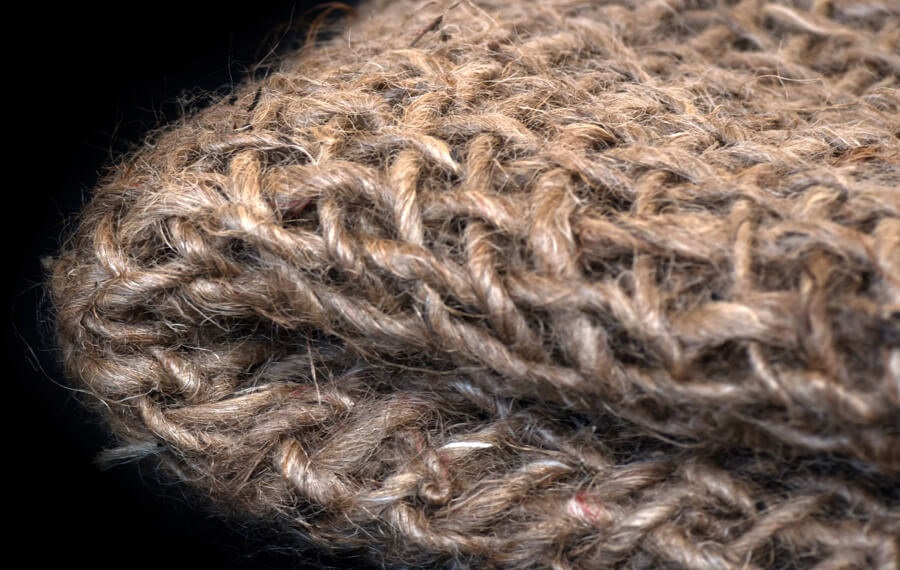
For those who don't know much about it, let's see what jute is
I'm sure people my age remember jute rugs. At that time Persian carpets were at the top of the field, jute being the 'poor relation'. That's the jute we're talking about, which we used to make. Jute - Corchorus olitorius - is an annual plant grown mainly for the fibers obtained from its stem. They are used to make twine, ropes, carpet and sacking.
The cultivation of jute goes way back in time, with documentary evidence dating as far back as ancient Egypt. Not surprisingly, the Arab peoples also use jute as a food. The young leaves and fruits are used in cooking as a vegetable and the dried leaves are used to make tea or a specific sauce.
Jute, like hemp, is an industrial plant from the stalk of which natural fibers are obtained. The stalk, which can grow up to 4 m high, is processed into silky golden threads over 3 m long with a diameter of 2.5 microns. They are the raw material for rope, sackcloth and jute carpets.
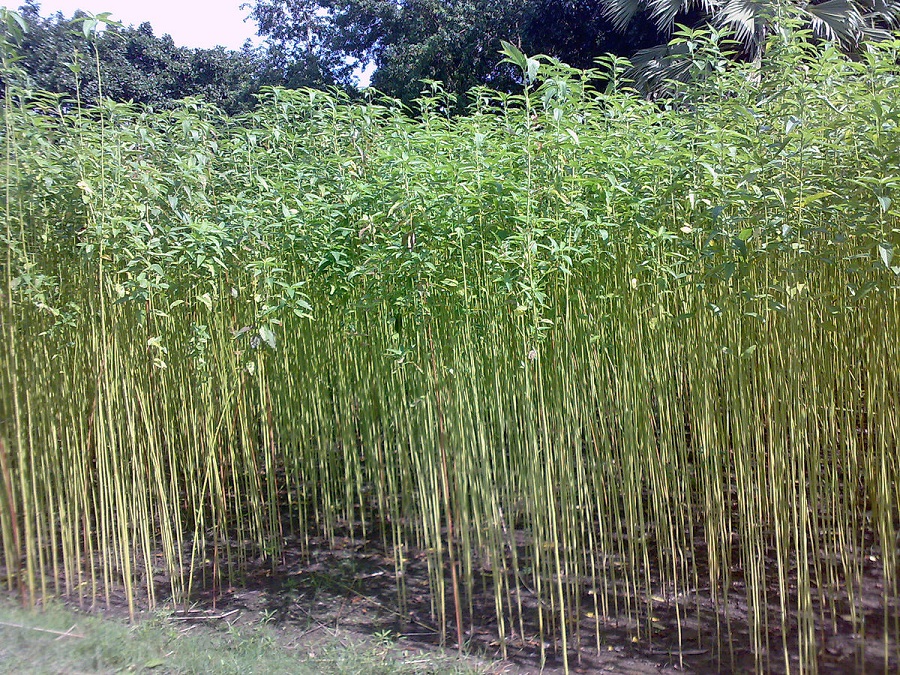

But let's go back to Thermo Jute and see how jute bags are transformed into thermal insulation and the main advantages of the new product
The sacks are first shredded and then separated in special fiber processing plants. The resulting fiber mass is then mixed with biopolymers and sodium carbonate in the following proportion:
- 85-90% jute fibers
- 8-10% biopolymers - used to bind fibers together
- 2-5% Sodium carbonate - for fire protection
The way it is made and the materials used make Thermo Jute a natural and healthy product for home insulation. The added biopolymers and sodium carbonate are materials commonly used in the food industry (biopolymers for packaging and sodium carbonate for baking powder), so they are not a health hazard. In addition, the bags from which jute comes have been used for the transportation of food products, so they do not pose a hazard either.
But the greatest of Thermo Jute's qualities is that it provides very good insulation in summer. Jute mattresses store much more heat than other similar materials and release it after a longer time. Thermo Jute has been tested by the Leipzig Material Testing Center, which confirmed its extraordinary heat-retaining properties.
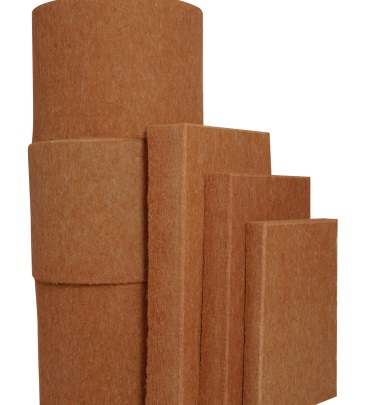
How Thermo Jute works as summer insulation
The highest temperature in a house in summer is just under the roof. On hot days, the temperature can reach up to 80ºC just under the tiled or tin roof. Insulation fitted between the trusses traps the heat and releases it after a few hours when the temperature starts to drop.
Thermo Jute has a heat storage capacity of 2350 J/kgK, much higher than other insulation materials. For example, glass wool has a capacity of 840 J/kgK. In this case the glass wool insulation will have to be twice as thick as jute to achieve the same insulation performance.
This extraordinary heat storage capacity makes insulation very effective in winter too. The heat in the house is stored in the insulation blanket and so does not escape through the walls or roof.
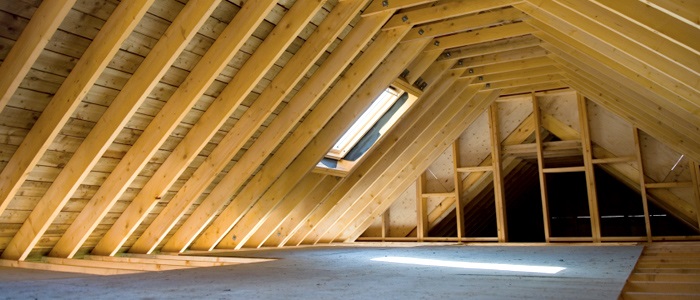
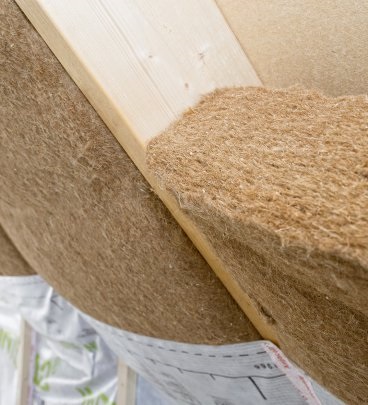
Other advantages of Thermo Jute insulation
It has very good mold resistance. Mold susceptibility tests carried out according to European standards by specialized institutions resulted in 0, which represents maximum resistance. This makes the insulation very suitable for insulating wooden houses.
Create a healthy climate with high humidity regulating capacity. Jute fibers can retain an impressive amount of moisture, which they release when the humidity in the air drops very low. This is why the insulation system is suitable for homes where there are people with breathing problems.
It is a natural product made from materials harmless to humans and animals. The material behaves exactly like a mattress made of natural materials so that it does not cause any problems neither during installation nor in use. There is no itching on the surface of the skin and no large amounts of dust. In houses insulated with Thermo Jute there is no danger of allergies or respiratory problems due to the insulation.
Contains no protein or starch so it's not a product pests want because it doesn't feed them.
Easy to fitA cutter, scissors and a stapler are all you need.
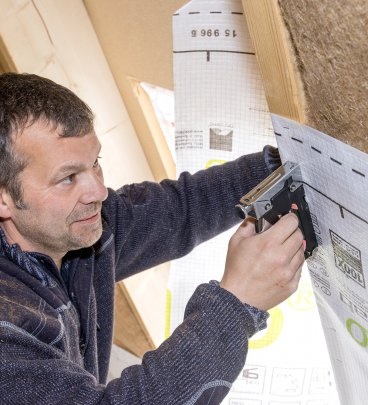
The good news is that this product is now also available in Romania. Naturalpaint, a company recognized for its concern in bringing and distributing natural products in the country, has this year thought of Thermo Jute. So, from now on, you will find, along with wool, hemp and wood fiber and jute insulation.
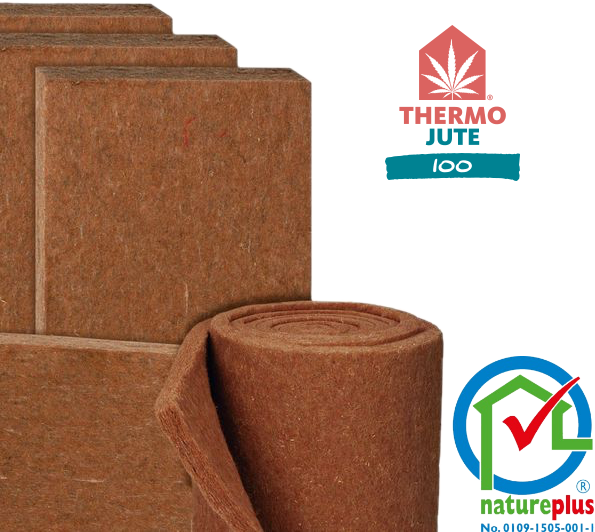
We're used to stories having a moral. So it is with the Thermo Jute story. When you are concerned about the sustainable use of resources, the protection of the environment, the recovery of waste, and in general what we leave for those who come after us, you are rewarded and you may even write a success story.
























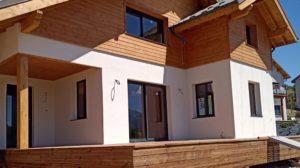

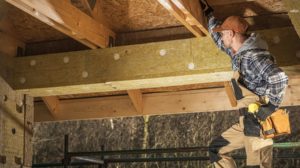
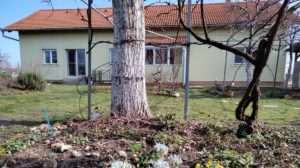
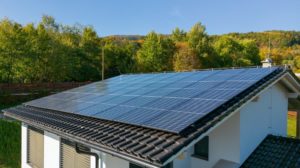
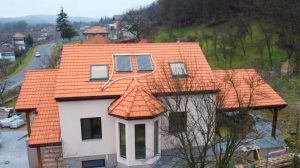

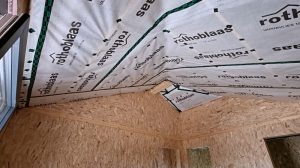




I have two questions:
1.How much does 1 sq.m cost and how many sq.m is a thermo-jute mattress? Don't say anything about dimensions!
2.You can also buy thermo jute in the form of fibre in the bag? Is the biopolymer (actually what do you call biopolymers? Bone cells? Polylactic acid?) that you talk about as warming the fibres of the mattress toxic and secret?
Thank you.
Good evening.
In the article there is a link to the German manufacturer and to the importer in Romania. Technical data sheets of Thermo Jute 100 and Thermo Jute 100 Plus products you can find here here if here (thermojute.ro website) In the leaflets you can find references to the properties and composition of the products.
On the website there are several possibilities to contact the importer who will tell you the price depending on the size of the carpet or jute roll.
All the best!
Hello. Thank you for your advice. I am about to start insulating my wooden cottage with thermojute. I have a question: between the levels (ground floor and attic) I have two layers of floor and between them I will put 5 cm thick thermojute mattresses. Is anti-condensation foil also necessary in this case or is this foil only to be used under the ceilings/exterior walls, where its use makes sense? Another question: is thermojute also a good sound insulator. Thank you
Hello!
Anti-condensation sheets allow moisture to escape from the wood (if the wood humidity is higher than recommended) without letting the outside moisture in. This avoids condensation on the wood and the rotting of the wood. Between levels, the use of anti-condensation foil is not mandatory (if the insulation is done correctly with anti-condensation foil at the floor level). But it is a way to ensure that moisture does not reach the insulation.
According to the manufacturer Thermo Jute also provides good sound insulation.
All the best!